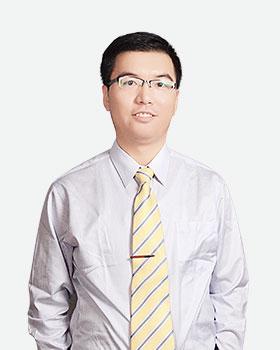一、完形填空(1-20题)
Directions:
Read the following text. Choose the best word(s) for each numbered blank and mark A, B, C or D on the ANSWER SHEET. (10 points)
The idea that plants have some degree of consciousness first took root in the early 2000s; the term “plant neurobiology” was __1__ around the notion that some aspects of plant behavior could be __2__ to intelligence in animals. __3__ plants lack brains, the firing of electrical signals in their stems and leaves nonetheless triggered responses that __4__ consciousness, researchers previously reported.
But such an idea is untrue, according to a new opinion article. Plant biology is complex and fascinating, but it __5__ so greatly from that of animals that so-called __6__ of plants’ intelligence is inconclusive, the authors wrote.
Beginning in 2006, some scientists have __7__ that plants possess neuron-like cells that interact with hormones and neurotransmitters, __8__ “a plant nervous system, __9__ to that in animals,” said lead study author Lincoln Taiz, “They __10__ claimed that plants have “brain-like command centers” at their root tips.”
This __11__ makes sense if you simplify the workings of a complex brain, __12__ it to an array of electrical pulses; cells in plants also communicate through electrical signals. __13__, the signaling in a plant is only __14__ similar to the firing in a complex animal brain, which is more than “a mass of cells that communicate by electricity,” Taiz said.
“For consciousness to evolve, a brain with a threshold __15__ of complexity and capacity is required,” he __16__.”Since plants don’t have nervous systems, the __17__ that they have consciousness are effectively zero.”
And what’s so great about consciousness, anyway? Plants can’t run away from __18__, so investing energy in a body system which __19__a threat and can feel pain would be a very __20__ evolutionary strategy,according to the article.
1.A.coined
B.discovered
C.collected
D.issued
2.A.attributed
B.directed
C.compared
D.confined
3.A.unless
B.when
C.once
D.though
4.A.coped with
B.consisted of
C.hinted at
D.extended
5.A.suffers
B.benefits
C.develops
D.differs
6.A.acceptance
B.evidence
C.cultivation
D.creation
7. A. doubted
B. denied
C. argued
D.requested
8. A. adapting
B. forming
C. repairing
D. testing
9. A. analogous
B. essential
C. suitable
D.sensitive
10. A. just
B. ever
C.still
D.even
11. A.restriction
B. experiment
C.perspective
D. demand
12.A.attaching
B.reducing
C.returning
D.exposing
13.A.However
B.Moreover
C.Therefore
D.Otherwise
14.A.temporarily
B.literally
C.superficially
D.imaginarily
15.A.list
B.level
C.label
D.local
16.A.recalled
B.agreed
C.questioned
D.added
17.A.chances
B.risks
C.excuses
D.assumptions
18.A.danger
B.failure
C.warning
D.control
19.A.represents
B.includes
C.reveals
D.recognizes
20.A.humble
B.poor
C.practical
D.easy
二、阅读理解
Text 1
People often complain that plastics are too durable. Water bottles, shopping bags, and other trash litter the planet, from Mount Everest to the Mariana Trench, because plastics are everywhere and don't break down easily. But some plastic materials change over time. They crack and frizzle. They “weep” out additives. They melt into sludge. All of which creates huge headaches for institutions, such as museums, trying to preserve culturally important objects. The variety of plastic objects at risk is dizzying: early radios, avant-garde sculptures, celluloid animation stills from Disney films, the first artificial heart.
Certain artifacts are especially vulnerable because some pioneers in plastic art didn't always know how to mix ingredients properly, says Thea van Oosten, a polymer chemist who, until retiring a few years ago, worked for decades at the Cultural Heritage Agency of the Netherlands. “It’s like baking a cake: If you don't have exact amounts, it goes wrong,” she says. “The object you make is already a time bomb.”
And sometimes, it's not the artist's fault. In the 1960s, the Italian artist Picro Gilardi began to create hundreds of bright, colorful foam pieces. Those pieces included small beds of roses and other items as well as a few dozen “nature carpets” - large rectangles decorated with foam pumpkins, cabbages, and watermelons. He wanted viewers to walk around on the carpets - which meant they had to be durable.
Unfortunately, the polyurethane foam he used is inherently unstable. It's especially vulnerable to light damage, and by the mid-1990s, Gilardi’s pumpkins, roses, and other figures were splitting and crumbling. Museums locked some of them away in the dark.
So van Oosten and her colleagues worked to preserve Gilardi’s sculptures. They infused some with stabilizing and consolidating chemicals. Van Oosten calls those chemicals “sunscreens” because their goal was to prevent further light damage and rebuild worn polymer fibers. She is proud that several sculptures have even gone on display again, albeit sometimes beneath protective cases.
Despite success stories like van Oosten’s, preservation of plastics will likely get harder. Old objects continue to deteriorate. Worse, biodegradable plastics designed to disintegrate, are increasingly common.
And more is at stake here than individual objects. Joana Lia Ferreira, an assistant professor of conservation and restoration at the NOVA School of Science and Technology, notes that archaeologists first defined the great material ages of human history - Stone Age, Iron Age, and so on - after examining artifacts in museums. We now live in an age of plastic, she says, “and what we decide to collect today, what we decide to preserve ... will have a strong impact on how in the future we’ll be seen.”
21.According to Paragraph 1, museums are faced with difficulties in____.
A.maintaining their plastic items.
B.obtaining durable plastic artifacts.
C.handling outdated plastic exhibits.
D.classifying their plastic collections.
22.Van Oosten believes that certain plastic objects are
A.immune to decay.
B.improperly shaped.
C.inherently flawed.
D.complex in structure.
23.Museums stopped exhibiting some of Gilardi’s artworks to____.
A.keep them from hurting visitors.
B.duplicate them for future display.
C.have their ingredients analyzed.
D.prevent them from further damage.
24.The author thinks that preservation of plastics is____.
A.costly.
B.unworthy.
C.unpopular.
D.challenging.
25.In Ferreira’s opinion, preservation of plastic artifacts____.
A.will inspire future scientific research.
B.has profound historical significance.
C.will help us separate the material ages.
D.has an impact on today's cultural life.
Text 2
As the latest crop of students pen their undergraduate application form and weigh up their options,it may be worth considering just how the point, purpose and value of a degree has changed and what Generation Z need to consider as they start the third stage of their educational journey.
Millennials were told that if you did well in school, got a decent degree,you would be set up for life.But that promise has been found wanting.As degrees became universal. they became devalued. Education was no longer a secure route of social mobility.Today,28 per cent of graduates in the UK are in non-graduate roles, a percentage which is double the average among OECD countries
This is not to say that there is no point in getting a degree, but rather stress that a degree is not for everyone, that the switch from classroom to lecture hall is not an inevitable one and that other options are available.
Thankfully,there are signs that this is already happening,with Generation Z seeking to learn from their millennial predecessors, even if parents and teachers tend to be still set in the degree mindset.Employers have long seen the advantages of hiring school leavers who often prove themselves to be more committed and loyal employees than graduates. Many too are seeing the advantages of scrapping a degree requirement for certain roles.
For those for whom a degree is the desired route,consider that this may well be the first of manyIn this age of generalists, it pays to have specific knowledge or skills. Postgraduates now earn 40 per cent more than graduates. When more and more of us have a degree, it makes sense to have two.
It is unlikely that Generation Z will be done with education at 18 or 21; they will need to be constantly up-skilling throughout their career to stay employable. It has been estimated that this generation, due to the pressures of technology, the wish for personal fulfilment and desire for diversity,will work for 17 different employers over the course of their working life and have five different careers. Education,and not just knowledge gained on campus, will be a core part of Generation Z's career trajectory.
Older generations often talk about their degree in the present and personal tense: I am a geographer' or 'T am a classist. Their sons or daughters would never say such a thing; it's as if they already know that their degree won't define them in the same way.
26.the author suggests that Generation Z should____
A.be careful in choosing a college
B.be diligent at each educational stage
C.reassess the necessity of college education
D.postpone their undergraduate application
27.The percentage of UK graduates in non-graduate roles reflect
A.Millennial's opinions about work
B.the shrinking value of a degree
C.public discontent with education
D.the desired route of social mobility
28.The author considers it a good sign that____
A.Generation Z are seeking to earn a decent degree.
B.School leavers are willing to be skilled workers.
C.Employers are taking a realistic attitude to degrees
D.Parents are changing their minds about education.
29.It is advised in Paragraph 5 that those with one degree should
A.make an early decision on their career
B.attend on the job training programs
C.team up with high-paid postgraduates
D.further their studies in a specific field
30.What can be concluded about Generation Z from the last two paragraphs?
A.Life long learning will define them.
B.They will make qualified educators.
C.Depress will no longer appeal them.
D.They will have a limited choice of jobs.
Text 3
Enlightening, challenging, stimulating, fun. These were some of the words that Nature readers used to describe their experience of art-science collaborations in a series of articles on partnerships between artists and researchers. Nearly 40% of the roughly 350 people who responded to an accompanying poll said, they had collaborated with artists; and almost all said they would consider doing so in future.
Such an encouraging results is not surprising. Scientists are increasingly seeking out visual artists to help them communicate their work to new audiences. ”Artists help scientists reach a broader audience and make emotional connections that enhance learning.” One respondent said.
One example of how artists and scientists have together rocked the scenes came last month when the Sydney Symphony Orchestra performed a reworked version of Antonio Vivaldi’s The Four Seasons. They reimagined the 300-year-old score by injecting the latest climate prediction data for each season-provided by Monash Univerity’s Climate Change Communication Research Hub. The performance was a creative call to action ahead of November’s United Nations Climate Change Conference in Glasgow, UK.
But a genuine partnership must be a two-way street. Fewer artist than scientists responded to the Nature poll, however, several respondents noted that artists do not simply assist scientists with their communication requirements. Nor should their work be considered only as an object of study. The alliances are most valuable when scientists and artists have a shared stake in a project, are able to jointly design it and can critique each other’s work. Such an approach can both prompt new research as well as result in powerful art.
More than half a century ago, the Massachusetts Institute of Technology opened its Center for Advanced Visual Studies (CAVS) to explore the role of technology in culture. The founders deliberately focused their projects around light-hance the “visual studies“ in the name. Light was a something that both artists and scientists had an interest in, and therefore could form the basis of collaboration. As science and technology progressed, and divided into more sub-disciplines, the centre was simultaneously looking to a time when leading researchers could also be artists, writers and poets, and vice versa.
Nature’s poll findings suggest that this trend is as strong as ever, but, to make a collaboration work, both sides need to invest time, and embrace surprise and challenge. The reach of art-science tie-ups needs to go beyond the necessary purpose of research communication, and participants. Artists and scientists alike are immersed in discovery and invention, and challenge and critique are core to both, too.
31.According to paragraph 1, art-science collaborations have_____.
A.caught the attention of critics
B.received favorable responses
C.promoted academic publishing
D.sparked heated public disputes
32.The reworked version of The Four Seasons is mentioned to show that_____.
A.art can offer audiences easy access to science
B.science can help with the expression of emotions
C.public participation in science has a promising future
D.art is effective in facilitating scientific innovations
33.Some artists seem to worry about in the art-science partnership_____.
A.their role may be underestimated
B.their reputation may be impaired
C.their creativity may be inhibited
D.their work may be misguided
34.What does the author say about CAVS?
A.It was headed alternately by artists and scientists
B.It exemplified valuable art-science alliances
C.Its projects aimed at advancing visual studies
D.Its founders sought to raise the status of artists
35.In the last paragraph, the author holds that art-science collaborations_____.
A.are likely to go beyond public expectations
B.will intensify interdisciplinary competition
C.should do more than communicating science
D.are becoming more popular than before
相关推荐:
233考研交流QQ群:693804080
考研课程上新中!讲师坐镇,立即听课>>>
233考研题库,超多模拟题等你来刷,真题卷及时更新,立即查看>>>
扫一扫二维码,加入考研微信群
超多干货福利随机掉落,志同道合小伙伴随时交流~ | 扫一扫二维码,关注233考研微信公众号
最新资讯第一时间知晓,备考经验技巧专栏传授 |











